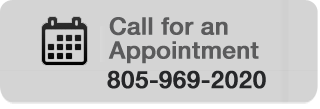What is Neuro-Optometry?
Neuro-Optometric Rehabilition
One of the most exciting areas of vision therapy is visual rehabilitation after brain injury. The neural pathways that control visual function are extremely complex and therefore very susceptible to being damaged during strokes, whiplash injuries, falls and other closed-head trauma. Our eyes are kept in alignment by subconscious reflex pathways that develop from our earliest days as infants and are continually improved throughout adulthood. It is one of those miracles of nature that our eyes accurately follow one another precisely as we follow moving objects, tilt and turn our heads, read, play sports and generally do all the things that we do!
Interplay between three systems is required for normal visual function:
1. Visual system: eyes, eye-muscles that move the eyes, the visual cortex of the brain that processes the visual information
2. Vestibular system: inner-ear mechanisms for balance and movement detection
3. Proprioceptive system: sensors in the neck and back that continually monitor and send positional information about head tilt and body position to the brain so that we can maintain visual alignment as we move about.
These sensing systems all integrate and affect one another. These complex nervous pathways in the brain stem, head, neck, and back can be damaged during the various traumas described above. Injury to any one of the areas affects the whole system. That is why diplopia (double-vision), poor balance, and loss of eye-hand coordination are such commonly experienced problems after strokes and car accidents.
Thankfully, because these reflex pathways are developed, learned, and perfected over time from our earliest days of crawling to playing high-level sports, they can be “re-trained” and learned again after the the system has been knocked out of alignment by injury. Neuro-Optometry is the special area of Behavioral Optometry that addresses this complex interplay of systems with vision therapy, lenses and prisms.
If you or somebody you know is suffering from this type of post-injury vision problems, please have them come in for a consultation. At this point in time the medical community is not generally familiar with this form of help for their traumatic brain injured patients. Many are left to deal with their double-vision being told “it will get better over time”. This is a dangerous approach for the patient as these vision problems severely limit their mobility and set them up for further injury from falls and other accidents.
With special prism glasses and vision therapy, relief can often be obtained almost immediately and long-term healing is possible. For more information about Neuro-Optometry please visit: noravisionrehab.org

